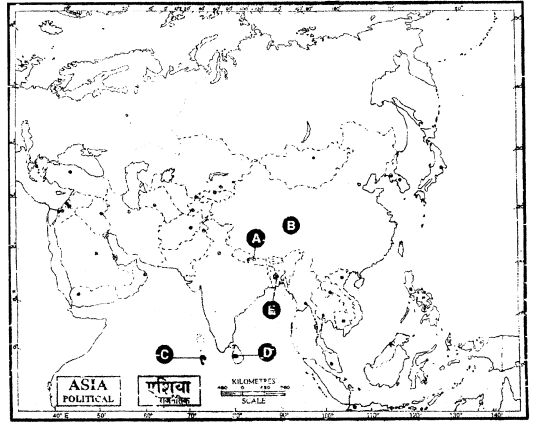Here we are providing 1 Mark Questions for Political Science Class 12 Chapter 2 Era of One Party Dominance are the best resource for students which helps in class 12 board exams.
One Mark Questions for Class 12 Political Science Chapter 2 Era of One Party Dominance
Question 1.
In which year first general election was held in India ? (C.B.S.E. 2012 Outside Delhi)
Answer:
The first general election was held in 1952.
Question 2.
Which Political Party laid emphasis on the idea of one country, one culture and one nation ? (C.B.S.E.2014)
Answer:
Jan Sangh.
Question 3.
During the first three general elections the Congress won more seats than any other party. Which party stood at the second number during these elections ? (C.B.S.E. 2014)
Answer:
Communist Party of India stood at the second number during these elections.
Question 4.
Who was the founder of the Bbartiya Jana Sangh ? (C.B.S.E. 2014)
Answer:
Dr. Shyama Prasad Mukherjee was the founder of the Bhartiya Jana Sangh.
Question 5.
What inspired the formation of ll) Communist group in 1920s in different parts of India ? (C.B.S.E. 2014)
Answer:
In the early 1920s, Communist groups emerged in different parts of India by being inspired from the Bolshevik Revolution in Russia.
Question 6.
In which year the Election Commission started using EVM ?
Answer:
The Election Commission started using EVM towards the end of 1990s.
Question 7.
Which political party of India had leaders like A.K. Gopalan, E.M.S. Namboodiripad and S.A. Dange ? (C.B.S.E, 2014)
Answer:
Communist Party of India had the leaders like A.K. Gopalan, E.M.S. Namboodiripad and S.A. Dange.
Question 8.
What has been the ideology of left parties in india?
Answer:
The ideology of left parties in India has been based on communism.
Question 9.
Name the founder President of the Congress Socialist Party. What name was given to this party after 1948 ? (C.B.S.E. 2013)
Answer:
Acharya Narendra Deva was the founder President of the Congress Socialist Party. After 1948, this party was known as the Socialist Party.
Question 10.
What do you mean by defection? (C.B.S.E. 2012 Outside Delhi)
Answer:
Defection means an elected representative leaves the party on whose symbol he was elected and joins another party.
Choose the correct answer :
Question 11.
In which year first general election was held in India ?
(a) 1947
(b) 1952
(c) 1955
(d) 1960
Answer:
(b) 1952
Question 12.
Who became the Prime Minister of India after the first general election ?
(a) Pt. JL. Nehru
(b) Sardar Patel
(c) Smt. Indira Gandhi
(d)Mahatma Gandhi.
Answer:
(a) Pt. JL. Nehru
Question 13.
In 1957, which party formed the govenment in Kerala ?
(a) Jan Sangh
(b) C.P.I
(c) Congress
(d) Socialist Party.
Answer:
(b) C.P.I
Question 14.
When was the Socialist Party formed in India ?
(a) 1948
(b) 1952
(c) 1955
(d) 1960.
Answer:
(a) 1948

